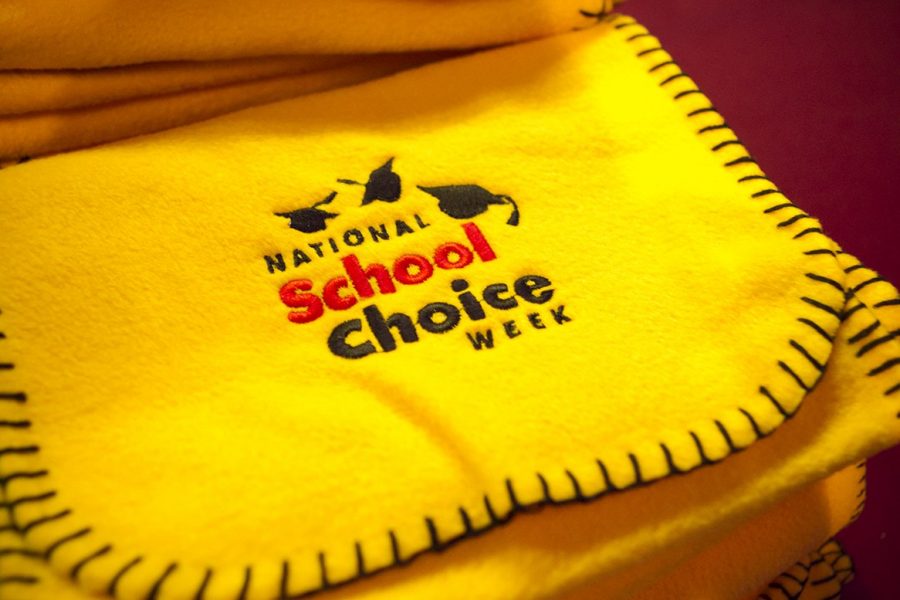Parents today face a wide range of education options and school choices. When I was growing up in a small town in Texas, no one ever mentioned school choice. There was one and only one school choice. At age five, all children boarded the big yellow bus bound for the local public school.
Now, parents are inundated with choices for educating their children.
Homeschooling
A small group of pioneer families began homeschooling their children in the early 1980s. For the next decade, these families fought legal battles to ensure that homeschooling would be recognized as a legal form of education in all fifty states. Now, hardly anyone bats an eye when families choose homeschooling. Today, families who decide to homeschool are well-supported in a number of ways:
- Homeschool co-ops and communities for studying with other families
- Art classes
- Music classes
- Bands, orchestras, and choirs
- Sports leagues
- PE classes
- Curriculum fairs
- Training workshops
In the early years of homeschooling, parents had to convince textbook companies to sell to them. Now, there are so many options for homeschool texts that new families can be overwhelmed. As they begin their research, they soon find themselves faced with a wide range of methodologies: classical education, Charlotte Mason, unschooling, and unit studies. Parents who decide to homeschool must be prepared to sacrifice their time choosing curriculum, teaching daily lessons, and driving their students to activities and field trips. Although some homeschooling parents work while educating their children, many face the decision of operating as a single-income family.
On the other hand, veteran homeschool families tout the benefits of family togetherness, flexible schedules allowing for travel and hands-on learning, and control over their children’s educational experience. Many families feel that it is the only option for creating individual education plans for unique individuals.
Homeschooling through Communities
Many homeschooling families choose to meet weekly with other homeschooling families to study. Meeting in groups together allows students to discuss literature together, to conduct science experiments and labs, and to get tutoring in math. Some of these communities offer enrichment classes like art, music and foreign language. Others offer honors or advanced placement classes to help high school students earn college credit.
These communities allow homeschooling families to get the best of both worlds. They are able to maintain their flexible schedules with lots of time at home while still getting a classroom experience. One potential disadvantage of homeschool communities can be that they lack strong leadership, which means that the courses offered vary from year to year. It is important for families to do their research when choosing to participate in a homeschool community, particularly as students approach the all-important high school years. Many families find that they prefer communities that have an established reputation of offering consistent courses with consistent instruction.
Online Homeshooling
In recent years, there has been a proliferation of online school options for families who choose to educate at home. Some families choose a full curriculum with all six classes for their children. Other families choose one or two classes a semester to round out their other homeschool options. Companies and schools offer a wide range of classes from core academic subjects to unusual electives like computer aided design or interior design. Some families are even homeschooling online through their local public school. Since online schooling is a relatively recent phenomenon, it is too soon to judge the success of this option. There have been some studies suggesting that students are not as attentive to online lectures and discussions as they would be to a live lecture. In addition, students who pursue full-time online schooling greatly reduce their opportunities to interact with live teachers and students which can make socialization difficult.
University Model Schools
University model schools offer a blended approach that is part homeschool, part private school. These schools most often hold classes 2-3 days a week. Like private schools, they employ instructors and administrators. Families usually pay tuition and purchase books and uniforms. Discipline and grades are handled by the faculty and administration. As a midway option between homeschool and private school, these schools are usually priced in the middle as well; they are more expensive than homeschooling but less expensive than full-time private schools. University model schools offer families more flexible schedules, but they restrict the choices families have over curriculum and courses.
Private Schools
In many communities around the country, families have multiple kinds of private schools to choose from for their school choice. These can be higher-priced college preparatory academies or less expensive parochial schools. Parents who choose private schools will need to consider the cost of tuition and transportation. In private schools, parents generally have more influence with the administration, but they are still subject to the curriculum and personnel choices of the administration and school board.
Charter Schools
Charter schools are also sometimes called magnet schools. In some communities, charter schools offer an alternative to the local public school. Public funding for these schools is supplemented by private funds. Often, these charter schools have a particular academic or career focus, building their curriculum around the fine arts, the maths and sciences, or careers in health and medicine. In other cases, charter schools are designed to meet the needs of gifted and talented students or of students with special needs. While these schools cater to the specific needs of some families, they still do not offer parents the same range of choice as homeschool, university model schools or private schools.
Public Schools
Public schools perhaps remain the most familiar option for parents. Students can be transported to their local public schools by the busing system. Most schools now offer all day kindergarten and sometimes all day preschool. The prime disadvantage of using the public schools is that families have no choice. They have no choice in terms of curriculum, teachers, or administration.
Author: Jennifer Courtney




